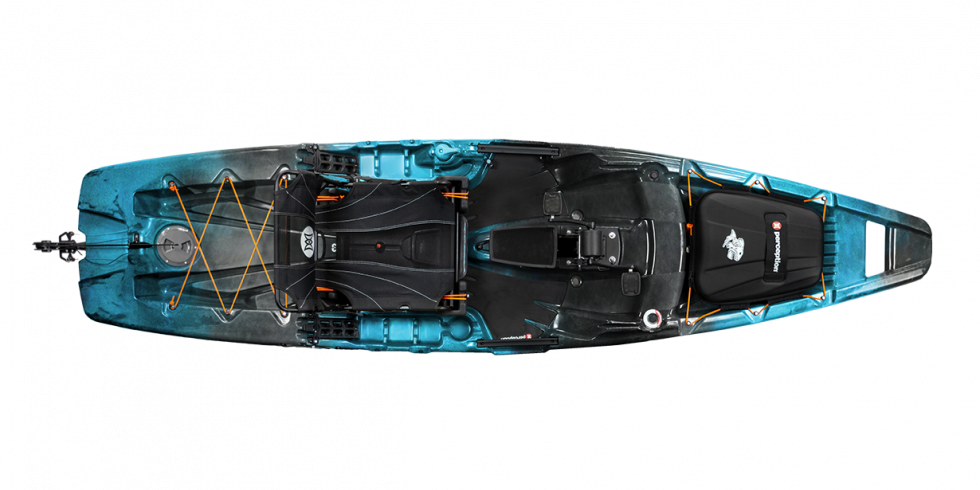Care and Repair
Replacement Parts
Click here to locate the correct replacement part for your Perception Kayak using our boat schematics. If you don't see your kayak model listed, we suggest you try TopKayaker.com who carries an extensive selection of parts, especially for older model kayaks. They are also very knowledgeable about boat parts.
General Care and Repair Tips
Rotomolded Kayaks Care
Our “roto” kayaks are made of high-density polyethylene, which is virtually maintenance-free. A minimal amount of care in storage and transporting will help the kayak maintain a like-new condition for many years. Polyethylene will become more flexible when in warm conditions such as a hot, sunny day. It is possible for a kayak strapped tightly to a roof rack for a series of days to temporarily deform at the weight-bearing points. Use a rigid bar sport rack in addition to a “kayak cradle” to disperse the weights.
Ultralite Kayak Care
Ultralite kayaks are co-extruded high-impact acrylic over premium impact ABS. Airalite is the same material used in whirlpools, spas and some marine parts; strong proof that it's a long-lasting material that will stand up to any type of water. This material creates a kayak that's light and stiff like fiberglass with the durability of plastic. Ultralite technology perfectly meets the unique demands put upon the hull and deck. Ultralite is also formulated with adhesives for additional flexibility and UV resistance.
Ultralite kayaks can be repaired much in the same way as fiberglass or Kevlar boats. Large cracks or holes can be patched with a fiberglass patch kit, available from most paddling or marine stores. Because Ultralite has an acrylic top layer, gouges and deep scratches can be filled with any cyanoacrylate-type adhesive, such as super glue gel. Such adhesives dry clear, and with light surface work after the glue dries, become almost invisible. It cleans up easily with mild soap. For tougher spots, try rubbing alcohol.
Cleaning
Usually, a quick rinse of fresh water is all that is necessary to keep your hull clean and functioning in good order. This is very important after paddling in salt water, or if your boat is outfitted with a rudder system. Be sure to thoroughly rinse the rudder, rudder cables, and footbraces with fresh water to remove salt residue.
Be careful when loading and unloading your kayak. Superficial scratches may occur but can be removed or reduced by the use of a marine boat polish designed for polyethylene hulls. Sanding or use of an abrasive rubbing compound is not recommended.
To keep your kayak shining and minimize the long-term degradation caused by UV exposure, use an ultraviolet protectant such as 303, available at your local Perception Kayaks dealer.
Warning: Avoid dragging kayak across the ground to prolong its life and maintain its look and performance. Use two people using the carrying handles to transport the boat.
Basic Repair Techniques
Many people wonder "Can I fix a dent in my kayak?"
Occasionally kayaks of all types will develop indentations in their hulls - these indentations are sometimes referred to as “oil canning” because they tend to pop in and pop out under pressure – similar to an oil can. Typically these indentations are due to improper storage or transport. Things like storing a boat flat on its hull or tying it on a car rack so that another boat or the rack itself pushes against the hull invite such indentations.
To remove a dent, set the boat in the direct HOT sun for a couple of hours with the dented area exposed. This process should be allowed to proceed for at least two hours. When the hull heats up, it usually reforms itself, but you may have to get creative with some weights or braces inside the boat to push the dents back out. Another method is to use your hands to push from the sides of the indentation to allow the center of the dent to pop back into shape. In the absence of HOT sun, another way to remove a dent is to use a heat gun, hair dryer or HOT water to heat the dented area.
Be careful to only heat the plastic to a soft state without burning or melting it. This will allow you to push the dent out and the hull should retain its original shape. The above methods can also be applied to dents in the side or chine of the kayak. These are often noticed after the boat is removed from vertical transport on a roof rack.
To prevent such dents in the future, be sure to store your boat either vertically, or on its side – never flat on the hull – and to be mindful of the hull during transportation.
For more involved our larger areas of damage, please contact your local dealer or our customer service department for proper repair instructions. We do sell Weld Rods which can be used to repair small holes or cracks with plastic welding techniques. A video demonstrating these techniques can be viewed on the Polyvance website.

